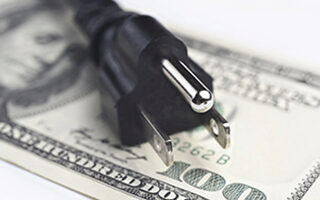
If you’ve turned down the thermostat and unplugged your unused appliances but find your electricity bills are still too high, it might be time to consider an energy audit.
An audit can help identify inefficiencies in your home where you’re not getting the full benefit of the energy you use. Some common culprits are leaky seals around doors and windows, low insulation and old appliances.
While your home may not feel uncomfortable or outdated, small problems add up quickly, and improving your energy efficiency can save 5 to 30 percent in a year. According to energy.gov, “the average home has enough air leakage to add up to a two-foot-square hole. That’s like leaving a medium-sized window wide open 24 hours a day.”
Before completing a professional energy audit, there are several tests you can do yourself. Even if you decide to bring in a professional, your findings can help them pinpoint the energy issues in your home.
If you can’t find the source of your energy loss or if you want to cut to the chase and call in an expert, check out these tips from energy.gov for preparing for a professional energy audit.


